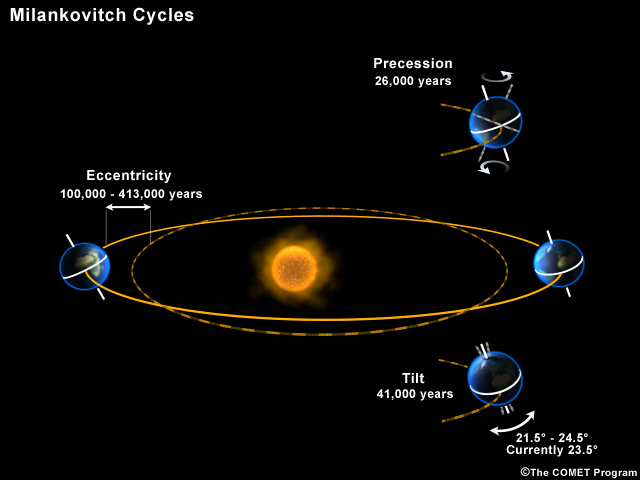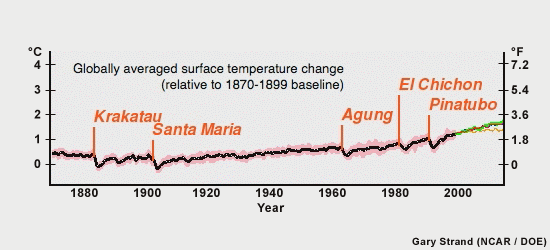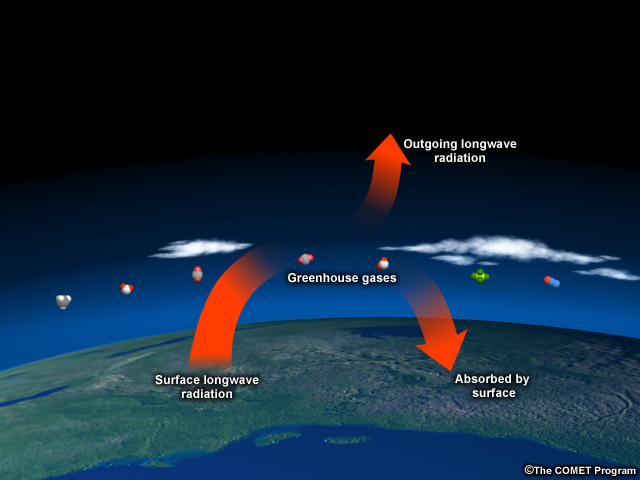Natural Factors
Earth's climate shifts over time because so many different land, ocean, and space phenomena have a hand in it. The sun is the main driver of Earth's climate, as it provides most of the energy. The sun's energy output increased about a tenth of a percent from 1750 to 1950, which contributed about 0.2°F (0.1°C) warming in the first part of the 20th century. But since 1979, when we began taking measurements from space, the data show no long-term change in total solar energy, even though Earth has been warming.

Repetitive cycles in Earth's orbit can influence the angle and timing of sunlight. The tilt and wobble of Earth's axis and the degree to which its orbit is stretched produce the Milankovitch cycles, which scientists believe triggered and shut off ice ages for the last few million years. But these changes take thousands of years, and so cannot explain the warming in this century.

Click to open a drifting continents & ocean currents animation.
Drifting continents make a big difference in climate over millions of years by changing ice caps at the poles and by steering ocean currents, which transport heat and cold throughout the ocean depths. These currents in turn influence atmospheric processes. Snow and ice on Earth also affect climate because they reflect more solar energy than darker land cover or open water.

Huge volcanic eruptions can cool Earth by injecting ash and tiny particles into the stratosphere. The resulting haze shades the sun for a year or two after each major blast. Dust and tiny particles thrown into the air by both natural processes and human activities can have a similar effect, although some absorb sunlight and help heat the climate.

Greenhouse gases, which occur both naturally and as a result of human activities, also influence Earth's climate.